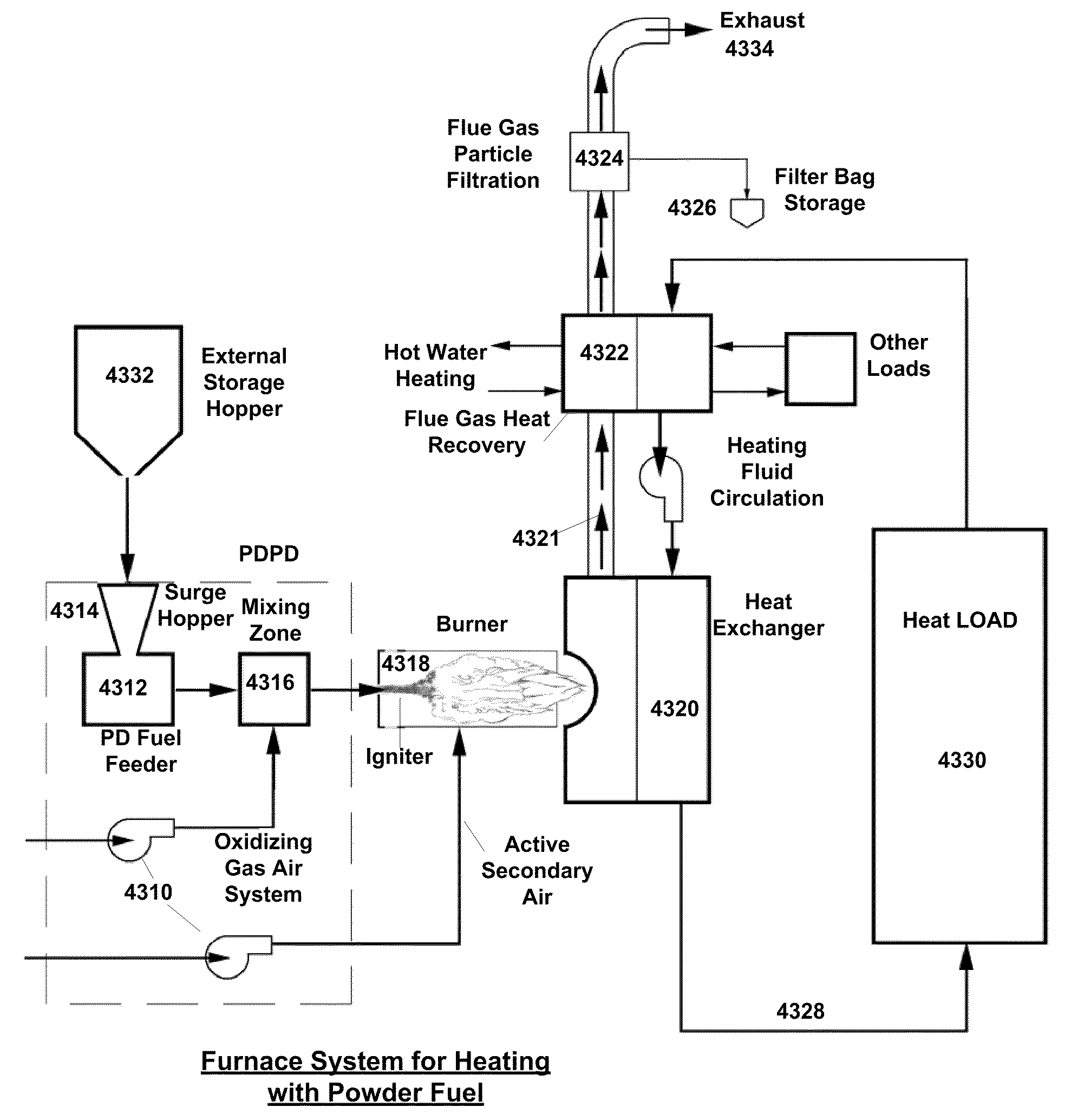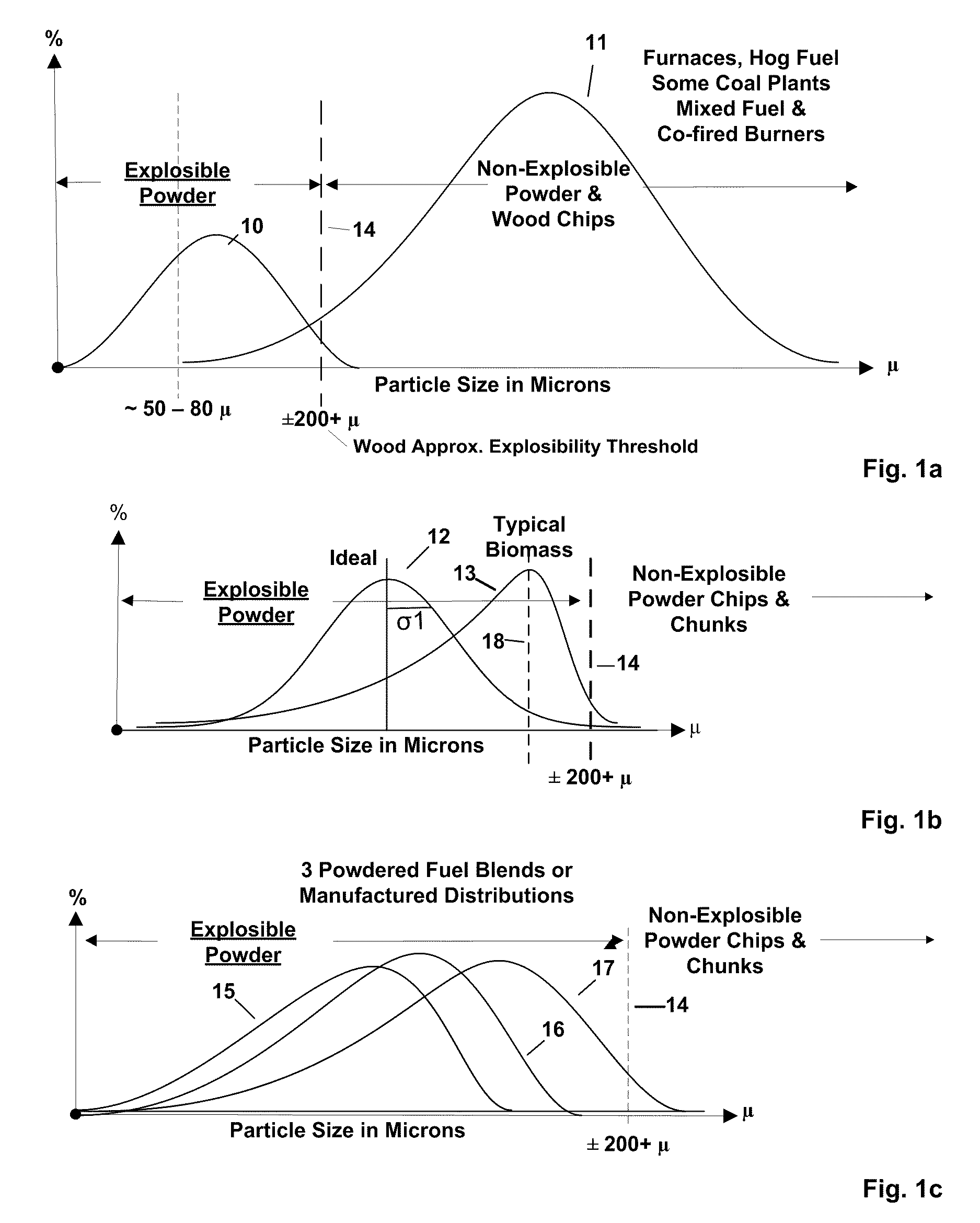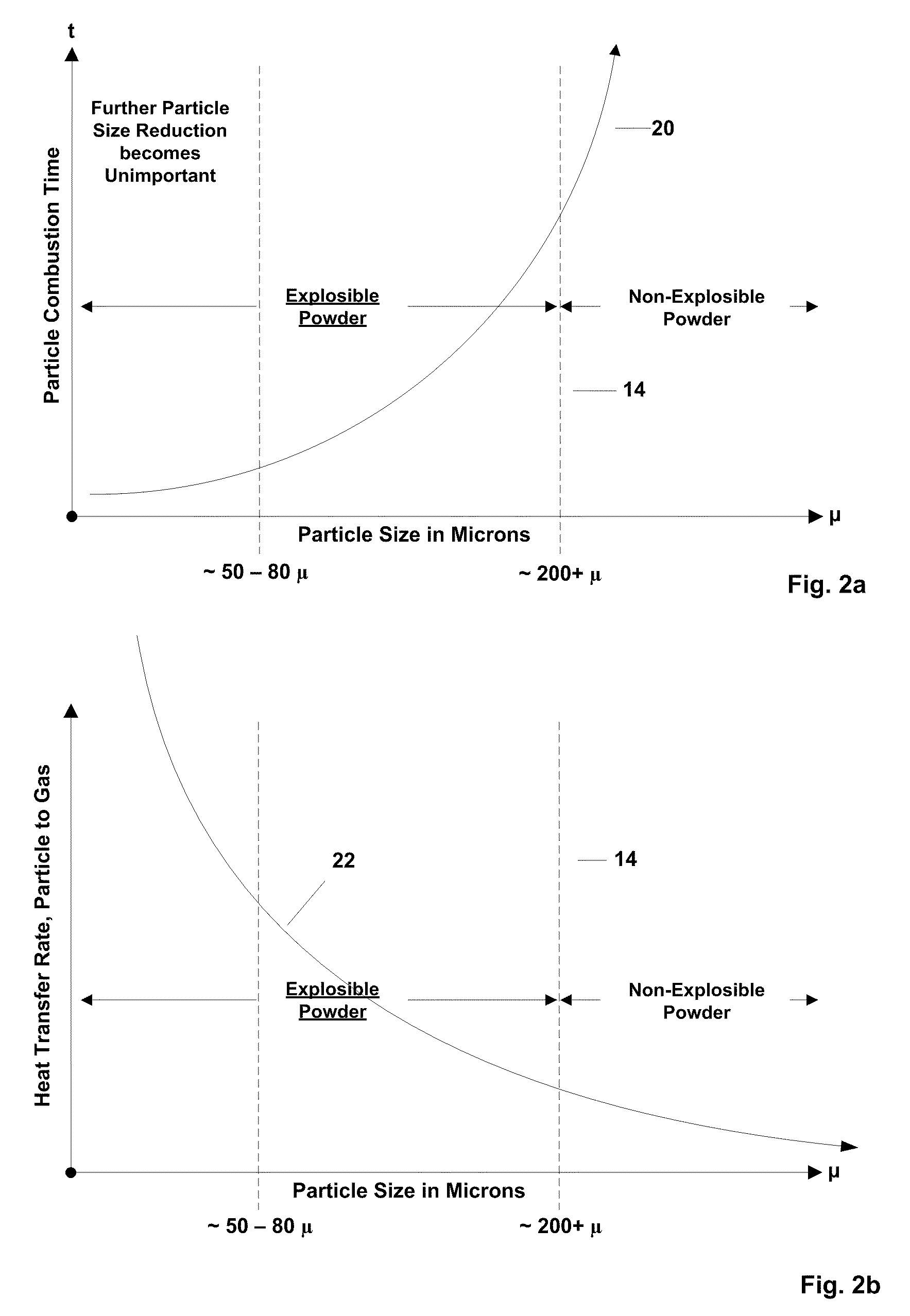Powdered fuel conversion systems and methods
a technology of powdered fuel and conversion systems, applied in the direction of combustion types, combustion of lump and pulverulent fuel, combustion types, etc., can solve the problems of increasing the cost of fuel storage, etc., to achieve the effect of improving stability
- Summary
- Abstract
- Description
- Claims
- Application Information
AI Technical Summary
Benefits of technology
Problems solved by technology
Method used
Image
Examples
Embodiment Construction
[0120]The invention described herein enables the sustained combustion of explosible powder mixed with an oxidizing gas in a dispersed travelling suspension to produce heat or perform work. The combustion technology and systems disclosed herein provide an opportunity for a major reduction in dependence on fossil fuels, leveraging and utilizing local production and distribution of renewable biomass energy fuel to fill in this gap, without the introduction of significant quantities of “new” CO2 into the atmosphere.
[0121]No burner system to our knowledge is designed to exclusively handle explosible biomass and other solid fuels suspended in a substantially explosible mixture of an explosible powder with an oxidizing gas, preferably air, with the result of direct energy conversion, in a manner that mimics single-phase combustion of propane or methane gas.
[0122]We are the first to develop, use, and disclose an explosible powder as a fuel in a burner, where the burner was designed around c...
PUM
 Login to View More
Login to View More Abstract
Description
Claims
Application Information
 Login to View More
Login to View More - R&D
- Intellectual Property
- Life Sciences
- Materials
- Tech Scout
- Unparalleled Data Quality
- Higher Quality Content
- 60% Fewer Hallucinations
Browse by: Latest US Patents, China's latest patents, Technical Efficacy Thesaurus, Application Domain, Technology Topic, Popular Technical Reports.
© 2025 PatSnap. All rights reserved.Legal|Privacy policy|Modern Slavery Act Transparency Statement|Sitemap|About US| Contact US: help@patsnap.com



